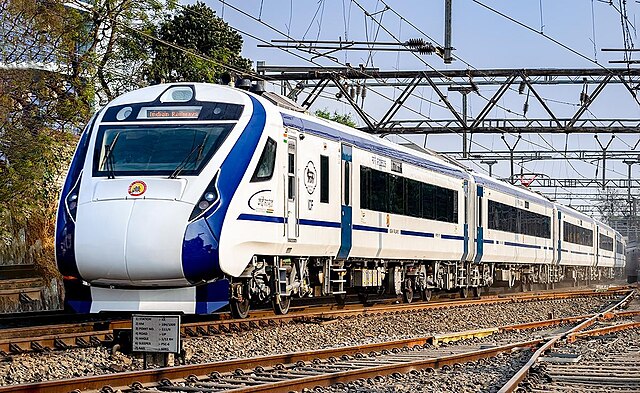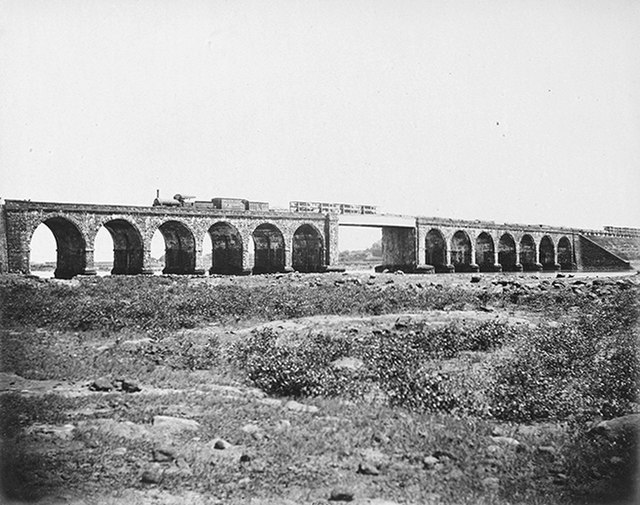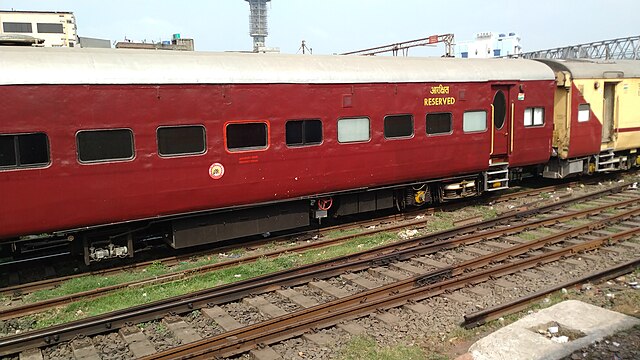Indian Railways operates India's railway system and comes under the purview of the Ministry of Railways of Government of India. As of 2023, it maintains over 108,706 km (67,547 mi) of tracks and operates over 13,000 trains daily. According to the Ministry of Railways, a route capable of supporting trains operating at more than 160 km/h (100 mph) is considered as a higher speed or semi-high speed rail line.
Prime ministers of India and Japan at ground breaking ceremony of Mumbai-Ahmedabad high-speed line. Modified E5 series Shinkansen that would be used in India can be seen in the backdrop.
WP class steam locomotives reached speeds of 100 km/h (62 mph) in 1947
WAP-1 electric locomotives reached a speed of 130 km/h (81 mph) in 1980
Introduced in 2019, Vande Bharat train-set built by ICF, is the fastest in India
Indian Railways (IR) is a statutory body under the ownership of the Ministry of Railways of the Government of India that operates India's national railway system. As of 2023, it manages the fourth largest national railway system by size with a running track length of 104,647 km (65,025 mi) and route length of 68,426 km (42,518 mi) of which 60,451 km (37,563 mi) is electrified. With more than 1.2 million employees, it is the world's ninth-largest employer and India's second largest employer.
Rail Bhawan, the headquarters of Indian Railways
The railway viaduct near Thane in 1855
A typical red-colored ICF coach used by the Indian Railways till the late 1990s
Introduced in 2019, Vande Bharat Express operating on a train-set built by ICF, is the fastest train in India







